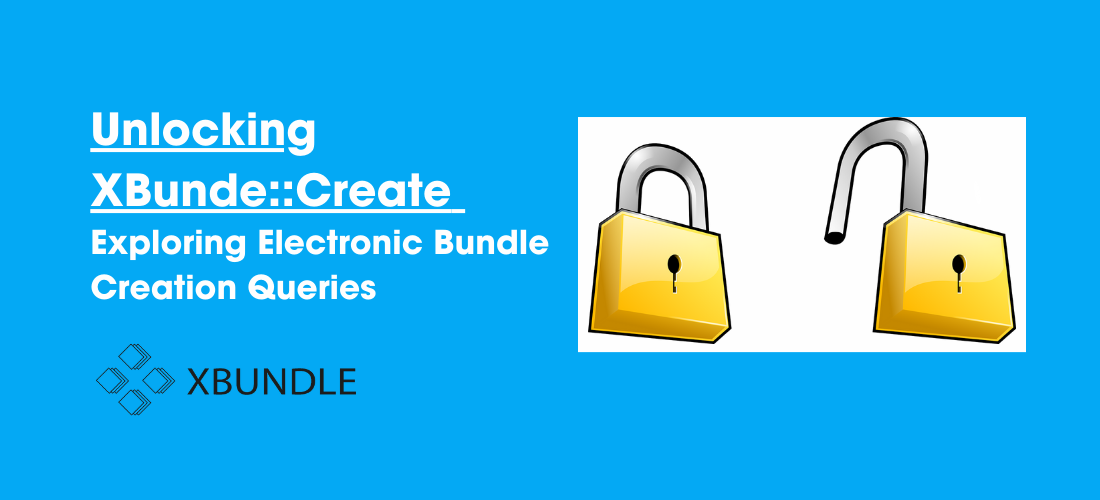Unlocking XBunde::Create
Exploring Electronic Bundle Creation Queries
Step into the future of legal documentation with XBundle::Create, a cutting-edge software designed to revolutionise the way electronic bundles are crafted for legal proceedings.
XBundle Create is a cloud-based platform that allows source documents (PDF and Non PDF files) to be collated to create a court-compliant electronic bundle. It is an end-to-end bundling solution.
As you navigate XBundle::Create, questions may arise about best practices, troubleshooting, and maximizing the potential of this powerful tool.
This article serves as your comprehensive guide, addressing frequently asked questions and offering insights to enhance your proficiency in creating electronic bundles with XBundle::Create.
1.) How do I access XBundle::Create ?
XBundle::Create is a cloud-based platform it can be accessed via a web browser and requires no pre-installation.
2.) What sort of files does XBundle::Create accepts?
XBundle Create accepts source documents in PDF and Office formats. Source documents are uploaded either via the web browser or in bulk using SFTP.
3.) Can you create hyperlinked index to pages within the bundled PDF?
Each Bundle has a customisable table of contents (or index page). Each document cited in the table of contents is hyperlinked to the document in the Bundle, so can be used to navigate to it.
When the Bundle Set is downloaded, the PDF has a bookmark for each document.
4.) Can you build a bundle using a CSV file?
Yes. The software can build a bundle set using a CSV file. XBundle::Create can also take load file (as exported from E-Disclosure platforms such as Relativity or Everlaw), and use this information / metadata to create the index page.
5.) Is the index customizable in terms of format and in terms of content, e.g. to be able to include a Unique Reference Number, the date the document was written, and a short description of the document?
The columns in the table of contents (or index), the layout and the pagination scheme can be agreed upon as part of the branding.
By default, the table of contents is an A4 portrait page with a title and a table that has order, description, date, and page number columns.
6.) Can you repeat index template and font so that the bundles have a uniform look?
Customisation of the table of contents and the pagination scheme are set for each Matter. A Matter may have a number of Bundle Sets (say one for each hearing).
The configuration of the table of contents (the index page) will be the same for each Bundle Set and require no further configuration.
7.) Some of my documents have incorrect dates, how can XBundle::Create deal with this?
Source documents (files) are uploaded to an internal repository (a database). During that upload metadata embedded in the source document are used to populate properties for that document in the repository.
An overlay file can be applied to the documents held in the repository to adjust their properties. This means that the metadata associated with one or all the documents in the repository can be altered.
Alternatively, you can manually change the dates of the documents on the platform. This will only change the date of the document for the purpose of the table of content (index). It will not change the underlying metadata of the document.
8.) Do you store documents prior to bundling on a cyber secure clous server?
The Create platform provides cloud storage and allows for customisable storage options. All XBundle servers are ISO27001:2017 certified (please see link to ISO certificate here).
XBundle data is hosted on UK servers and we are monitored and audited according to the standards by the British Assessment Bureau and GDPR.


